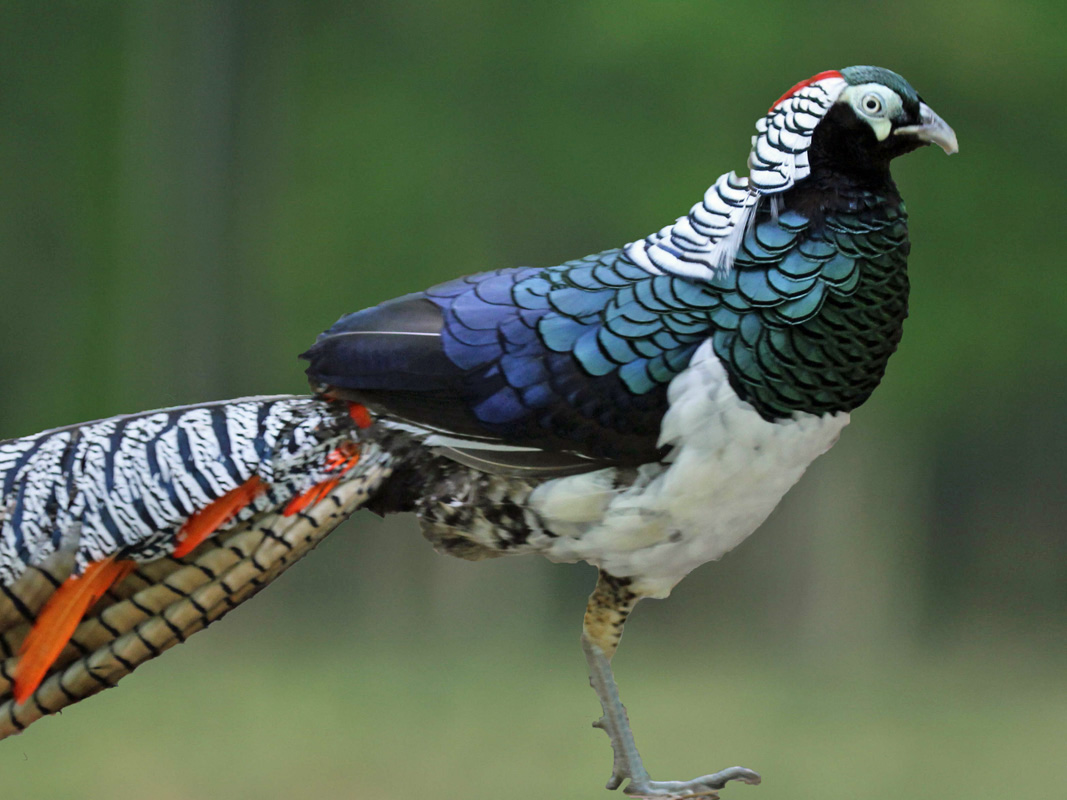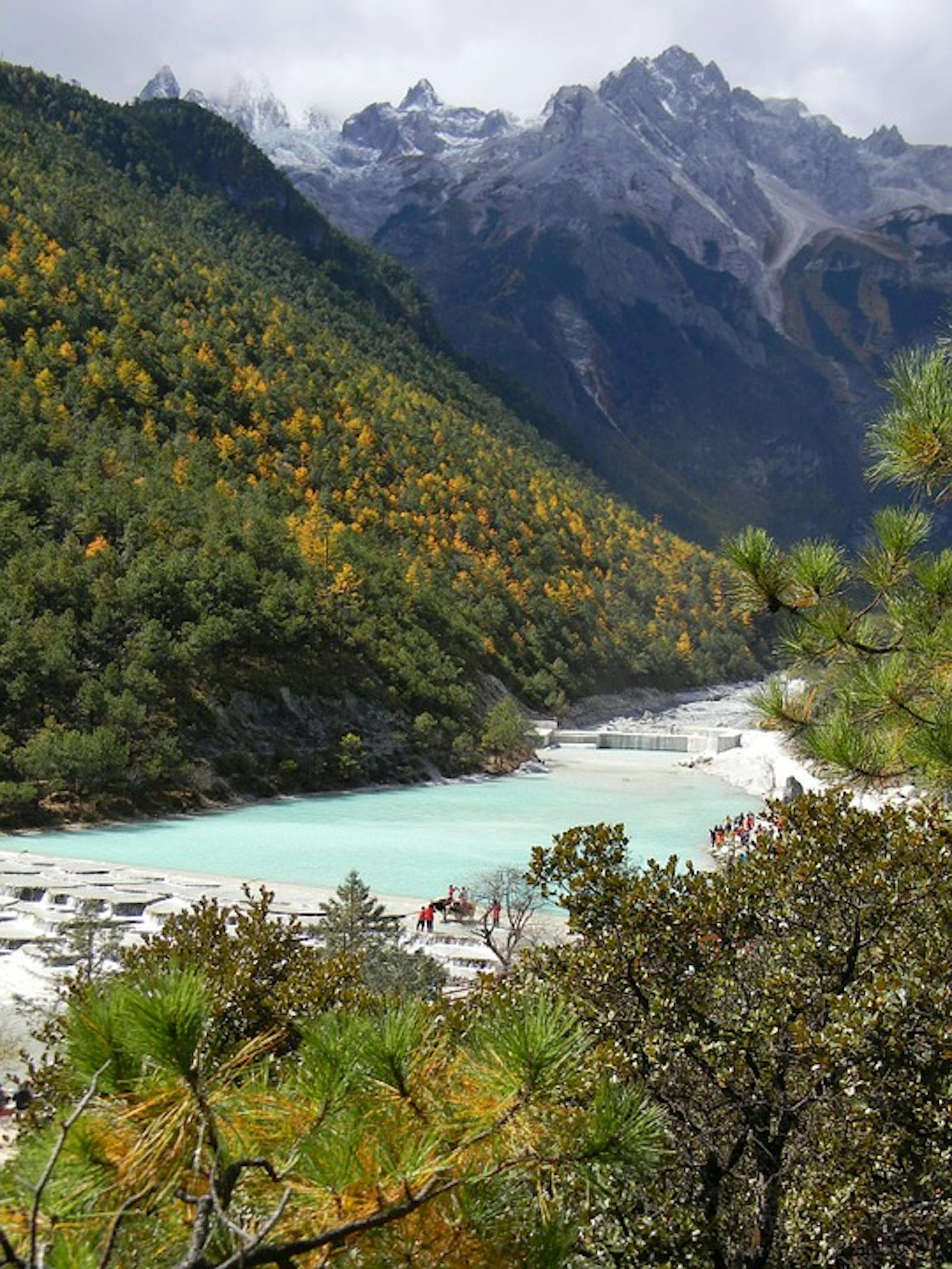Hengduan Mountains Subalpine Conifer Forests
The ecoregion’s land area is provided in units of 1,000 hectares. The conservation target is the Global Safety Net (GSN1) area for the given ecoregion. The protection level indicates the percentage of the GSN goal that is currently protected on a scale of 0-10. N/A means data is not available at this time.
Bioregion: Hengduan Mountain Conifer Forests (PA53)
Realm: Eastern Eurasia
Ecoregion Size (1000 ha):
9,964
Ecoregion ID:
697
Conservation Target:
31%
Protection Level:
5
States: China
The Hengduan mountain system forms a corrugated landscape of deep river gorges and tall dividing ranges at the southeastern margin of the Tibet Plateau and is now understood to be the most biologically diverse temperate region on Earth. Steep topography, active tectonics, varying exposure to the monsoon, and a subtropical latitude have generated a richness of species that rivals the Tropics, despite cold, snowy winters.
Subalpine conifer forests of the Hengduan Mountains grow at elevations of 2,800–4,500 m in the upper reaches of two great river catchments, the Mekong (Lancang) and Yangtze (called Jinsha in its upper reaches). Here, the subalpine conifer forest is dominated by spruce or fir, depending on elevation. Above 3,500 m elevation, fir trees are abundant and easy to recognize from afar as a dark band against slopes of pale gray limestone. Conifers rise through a lower canopy of broadleaf deciduous trees that include birch, maple (45 species in the Hengduan Mountains), and mountain ash. Larch is an early-successional tree that colonizes disturbance-prone areas, eventually giving way to spruce or fir.
_1_Rod%20Waddington%20via%20Wikimedia%20.jpg)
The flagship species of the Hengduan Mountains Subalpine Conifer Forests ecoregion is the Yunnan snub-nosed monkey. Image credit: Rod Waddington, Creative Commons
Yew and Pseudotsuga chinensis, an East Asian cousin of the North American Douglas fir, are less frequent components of the subalpine forest. Yew—with potent cancer treating properties—has been depleted by half since the 1990s; Pseudotsuga chinensis declined about 30% during the 20th Century as the result of logging. Slopes with a sunny aspect support subalpine oak species, which can co-occur with fir up to an elevation of 4,600 m to constitute some of the highest closed-canopy forests in the world.
Small-statured trees and shrubs of the lower canopy include more than 200 species in the Hymenanthes sub-genus of Rhododendron, most of which occur at subalpine elevations. These species probably evolved during recent Ice Age climate fluctuations and hybridize so readily that estimates of species number are poorly constrained.
Low elevation dry valleys, encompassed within this ecoregion, support microphyllous (small-leaved) vegetation adapted to intense sunlight and strong winds that blow up valley nearly every afternoon. Non-native Opuntia cactus also thrive in the dry valley habitat.

Lady Amherst pheasant. Image credit: Dick Daniels, Creative Commons
In these conifer forests, the Yunnan snub-nosed monkey forms bands of a hundred or more individuals that subsist year-round at elevations above 4,000 m, feeding on foliose lichen abundant in the forest canopy. In addition to the snub-nosed monkey, mammals of conservation significance include the endangered red panda, vulnerable clouded leopard and three species of musk deer.
Protected areas in the southern Hengduan Mountains include the Yulong (Jade Dragon) Geopark, Baima Snow Mountain Nature Reserve and Pudacuo National Park. Wetlands here provide critical winter habitat for the black-necked crane and other waterfowl.
Until 1998, late-successional forests of the Hengduan mountain system were logged commercially. Since then, reforestation efforts have increased forest cover, but tend to favor spruce over fir. Some aspects of the tourism infrastructure of Yulong Geopark seem ill-conceived for wildland conservation, with cable cars, artificial landscape features and a golf course. Wild medicinal plants and fungi are harvested from this ecoregion, and edible Matsutake ‘pine mushrooms’ are an important commodity in some areas. The ancillary impacts of harvesting activity may be at least as significant as the actual reduction in the target fungus.
Priority conservation actions for the next decade are to: 1) continue to expand and maintain connectivity among the protected area network; 2) encourage development of appropriate tourism infrastructure for the burgeoning domestic tourism market in Southwest China; 3) follow best practices to monitor and control the collection of wild plants and animals; and 4) monitor the effects of climate change in this sensitive, vertically stratified mountain region.
Citations
- Boufford, D.E. 2014. Biodiversity Hotspot: China’s Hengduan Mountains. Arnoldia 72(1): 24-35.
- Carpenter, C. 2000. Hengduan Mountains subalpine conifer forests. https://www.worldwildlife.org/ecoregions/pa0509. Accessed November 2018.
- Kirkpatrick, R.C., Long, Y.C., Zhong, T., Xiao, L. 1998. Social Organization and Range Use in the Yunnan Snub-Nosed Monkey Rhinopithecus bieti. International Journal of Primatology: 19(1): 13-51.




